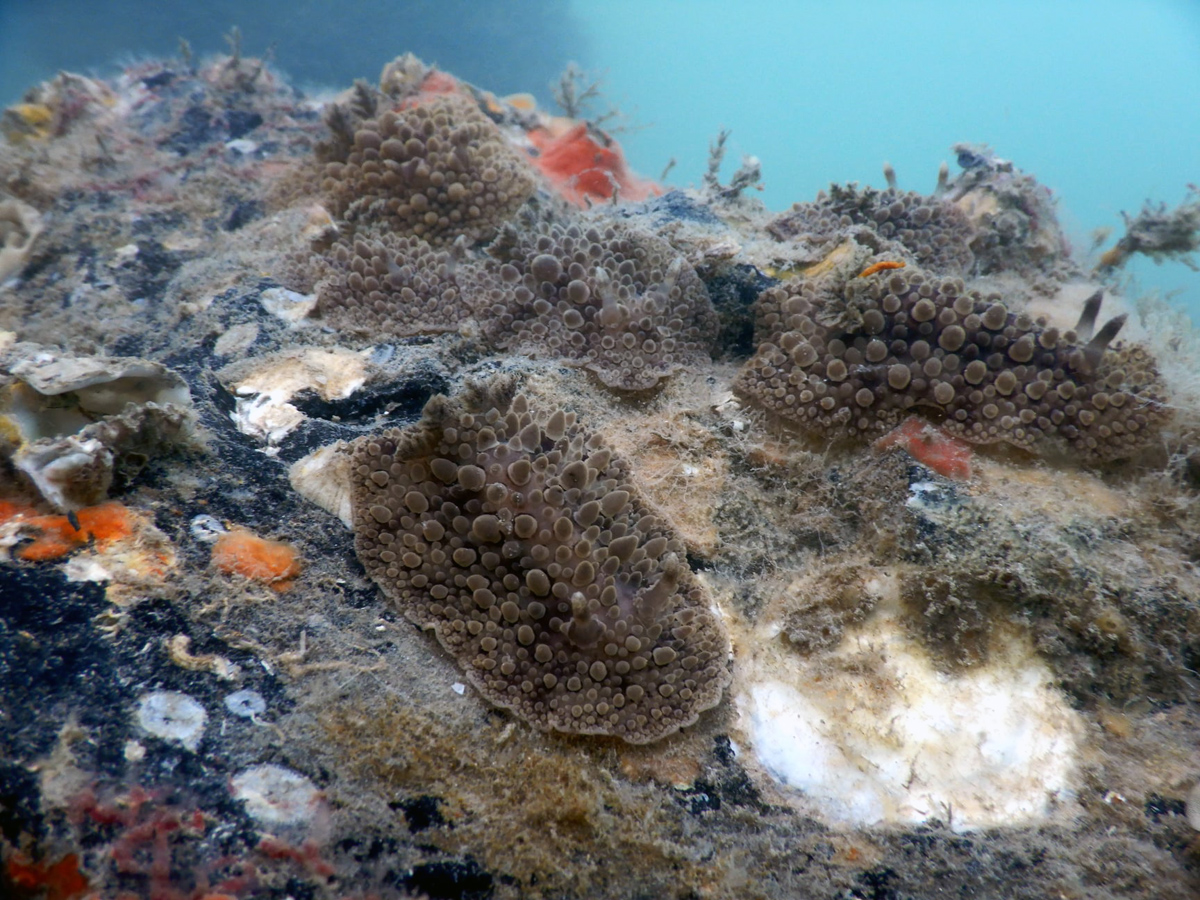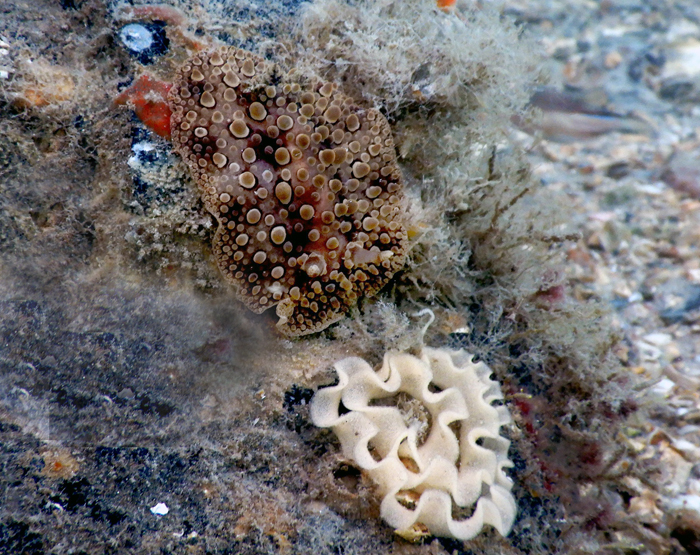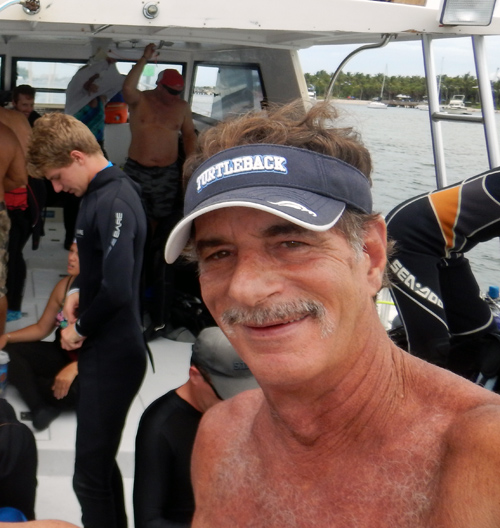 |
Image courtesy of Bob Blauvet
Jupiter, Florida in the ICW waterway under a bridge.
|
Image courtesy of Bob Blauvet Jupiter, Florida  |
cf. Carminodoris sp. (undescribed) Holly molly - look at these monsters - Huge and apparently undescribed. Branchers familiar with Caribbean species have been weighing in for days now guessing Dendrodorris warta, and Doris verrucosa, and a new Hoplodoris (now Carminodoris) but I am going to weigh in with Angel Valdes and go with a new Carminodoris. This giant looks somewhat similar to Hoplodoris sp, on page 180 in Caribbean Sea Slugs but there are external differences, such as the largest smooth tubercles are not distributed in two rows. And in Bob's photos we see that the tubercles cover the dorsum uniformly. Otherwise they are pretty much a match. Carminodorids belong to the family Discodorididae and feed on sponges. From Bob's photos it looks like this herd has done a pretty good job of grazing this reef. Bob also reports that over a couple weeks specimens have doubled in size, to about 50 mm in length. We now even have documentation of the egg ribbon (seen at left). Hopefully we can collect a few specimens and compare them to Jeff Hamann's critter in Caribbean Sea Slugs. Good show Bob. Many dorid species have direct development larvae. I believe that is what we are seeing here. When we see a herd of critters like this, crawling all over each other, it often indicates direct development where the larvae hatch out as miniature slugs, directly onto their food source and spend no time drifting around as veliger larvae, in the plankton. Will be interesting to see if I am right. Thanks for input from Anne DuPont, Bob Blauvelt, Miguel Pontes and Angel Valdes.
|
Dave Behrens
Sammamish, WA 98074
Mar., 2021
Send Dave email at davidwbehrens@gmail.com
Bob Blauvelt getting ready to have fun

I'm an avid scuba diver who most of the time you will find looking under rocks, flipping shells, and picking through hydroids for nudibranchs and other sea slugs. My hope is to find and photograph ones I've never seen before. When I do to me it's like finding a little gold nugget. Living in South fl. I'm fortunate to be able to do this year round in warm water. I like the simplicity of compact cameras and I am using a Nikon W300.
Bob Blauvelt Jupiter, Florida Mar. 2021
Send Bob mail at blauveltbob@yahoo.com |

Attention all you Sluggers, and you know who you are! The NSSI 2nd edition is now available in ebook PDF and book form . The hard back version will become available Nov. 1st. Both will cost $65 (individually). You will need to jump through a few hoops to get the electronic version as pdf distribution is protected by Adobe ID!! Please read the following to enable reading your electronic purchase! This new 2nd Edition is updated and reorganized, including 185 new species. Among other features, the new edition includes additional photographs of species, an identification key, and an up-to-date classification reflecting the latest evolutionary relationships. The Indo-Pacific represents the largest expanse of tropical ocean in the world, stretching from the Indian Ocean coast of southern Africa and the Red Sea to the central Pacific of the Hawaiian Islands, Easter Island and the Marquesas. This region supports the most diverse marine fauna of any place in the world for most groups of marine organisms. The nudibranchs and sea slugs are no exception to this rule; there are about 3,000 described species of these organisms in the world and at least 40% of these have been found exclusively in the Indo-Pacific tropics. This book illustrates 2,138 Indo-Pacific nudibranchs and sea slugs, including many undescribed species.
|

|
